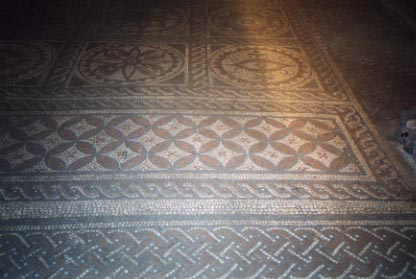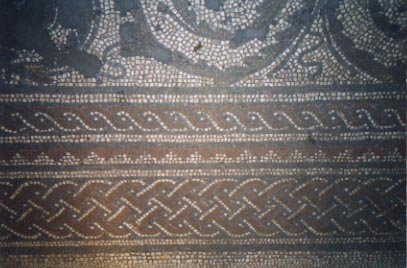The Hypocaust mosaic at Verulamium.
Verulamium is close to the modern city of St Albans and although there is little to show for it now, it was a very important town in Roman Britain. Soon after it was founded, the Romans were made to feel very unwelcome by the Iceni tribe led by Boudicca, who destroyed the town in 61 AD. Despite this, the town was occupied for 400 years.
|
Some fine mosaics have been excavated from the site and most of these are on view in the Verulamium museum, including the well-known horned "sea god" mosaic. The mosaic floor shown here is from the hypocaust, in a building near the museum. The floor of the room was raised up on brick pillars to allow hot air from a fire to circulate underneath it, a form of central heating. |
 |
back to list (mosaics in the south of England)
the joy of shards Mosaics Resource
